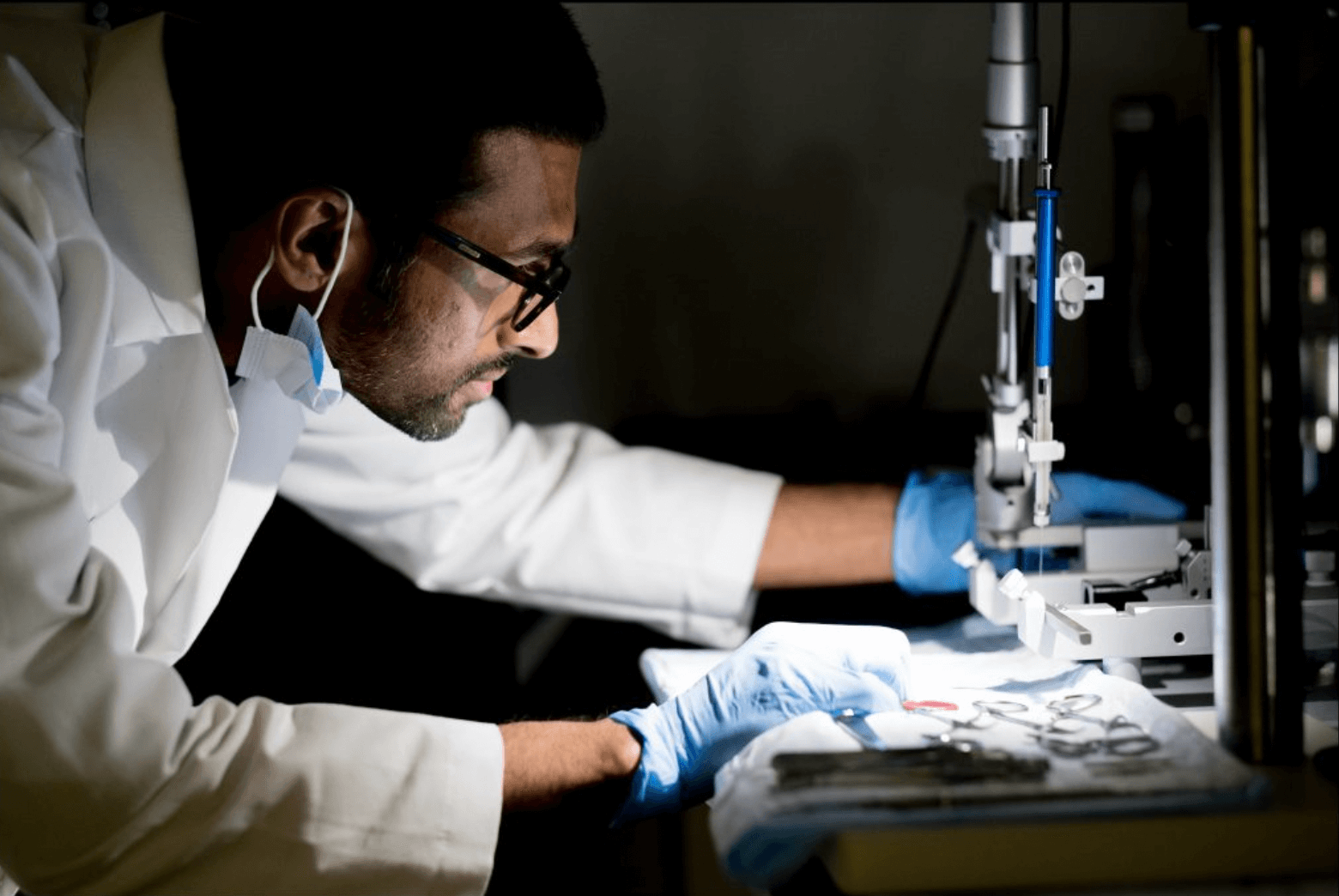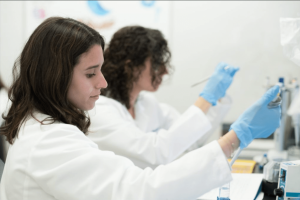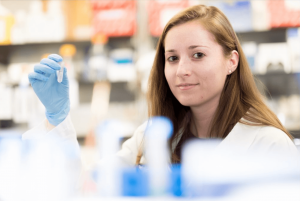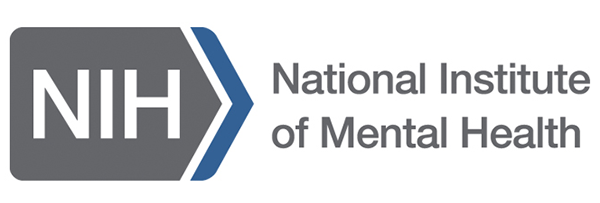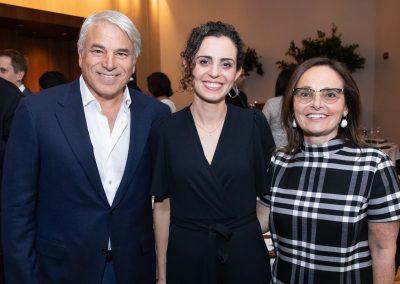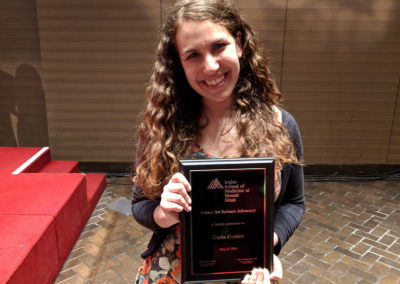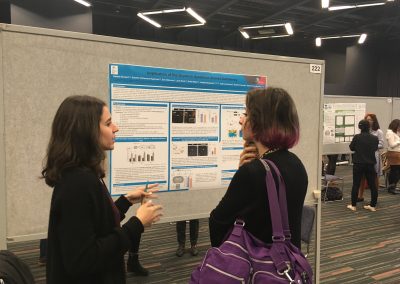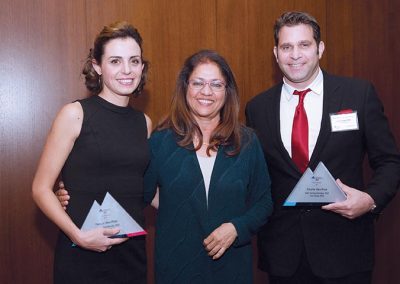Research
Studies in our lab are focused on understanding the mechanisms by which autism-associated mutations lead to the manifestation of behavioral deficits. We specifically ask how these mutations affect brain networks that subserve social behavior and social reward processing, and how these changes lead to social behavior deficits. To address these scientific questions, our lab uses transgenic rat models that harbor mutations in autism-high risk genes, including in the Shank3gene, and applies behavioral and molecular neuroscience approaches. These include RNAscope, immunohistochemistry, and retro and anterograde labeling for anatomical analysis of specific brain circuits, fiber photometry approaches to record neural activity and/or assess neurotransmitter levels during social behavior, and cutting-edge chemo-genetic tools to manipulate specific neural circuits, all with the goal to uncover altered brain circuits that can be manipulated with circuit-specific non-invasive interventions to ameliorate social behavior deficits.
Our lab is part of the Seaver Autism Center for Research and Treatment at the Icahn School of Medicine at Mount Sinai. The Seaver Autism Center is a fully integrated, translational research center that leads progressive studies and provides personalized care to individuals with autism and related rare disorders. As a team, we are dedicated to discovering the biological causes of autism and developing breakthrough treatments.
Learn more about the Seaver Autism Center’s translational research approach to study Shank3-deficeincies, Phelan-McDermid syndrome, and autism spectrum disorder.
Meet the Team


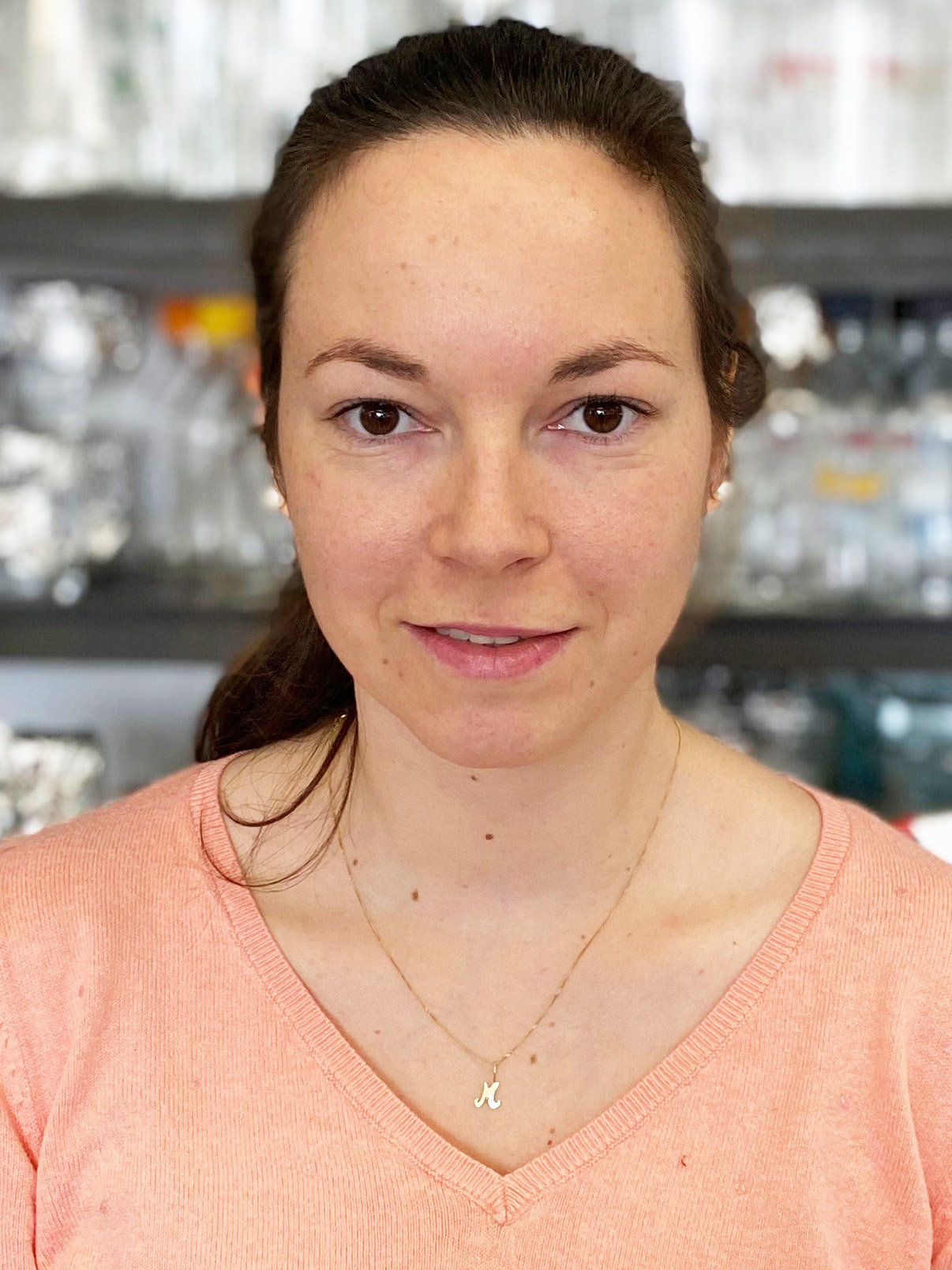

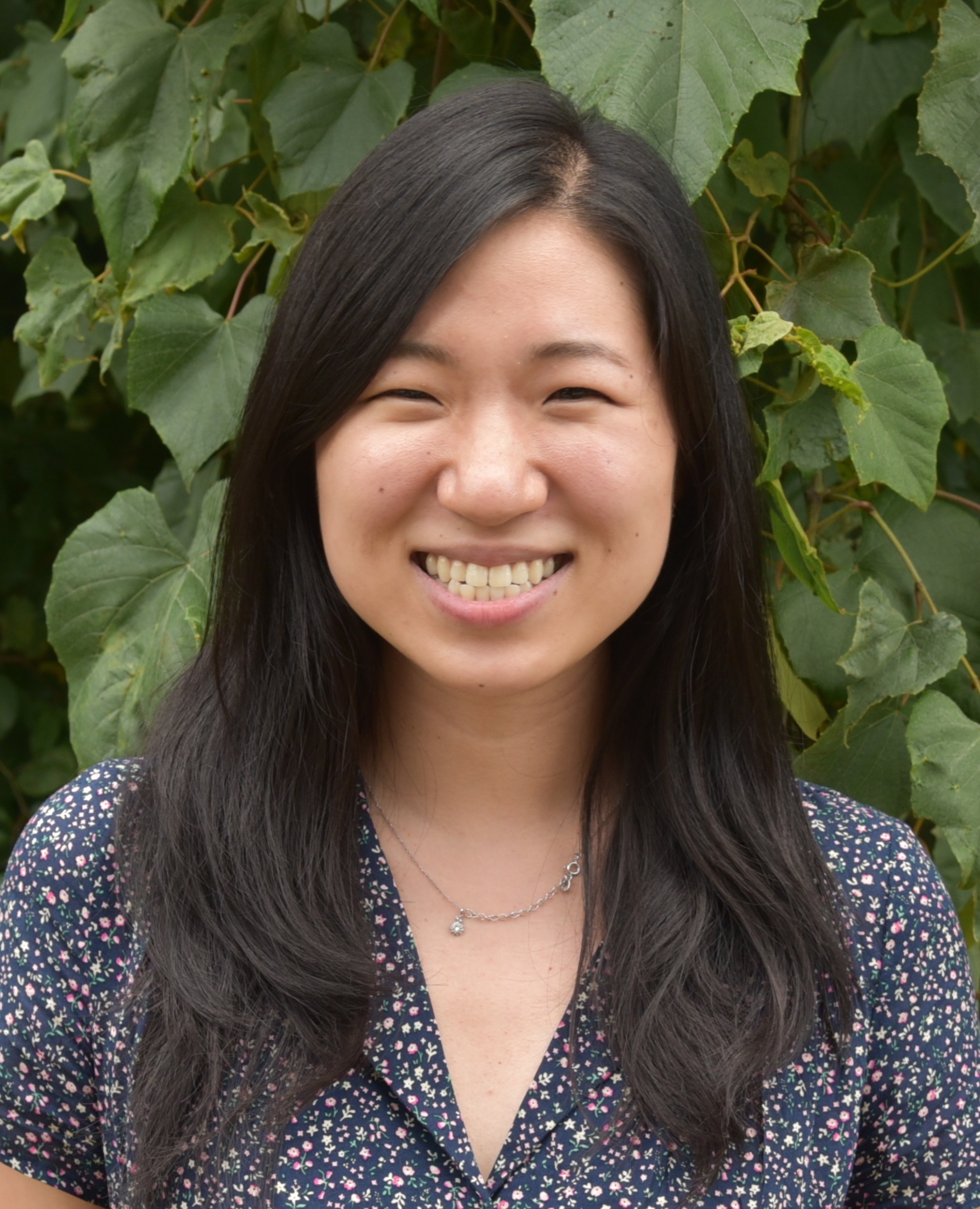



Thompson Uwanomen
SURP Intern
Lab Alumni

Roberto Robles
Intern

Carla Golden
Graduate Student

Natalie Burlant
Associate Researcher
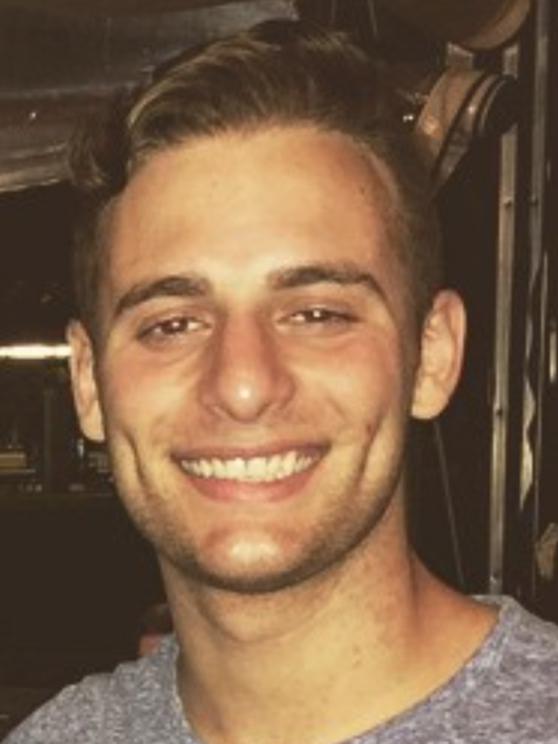
Lacin Koro
Associate Researcher

Camille Goldman
SURP Intern
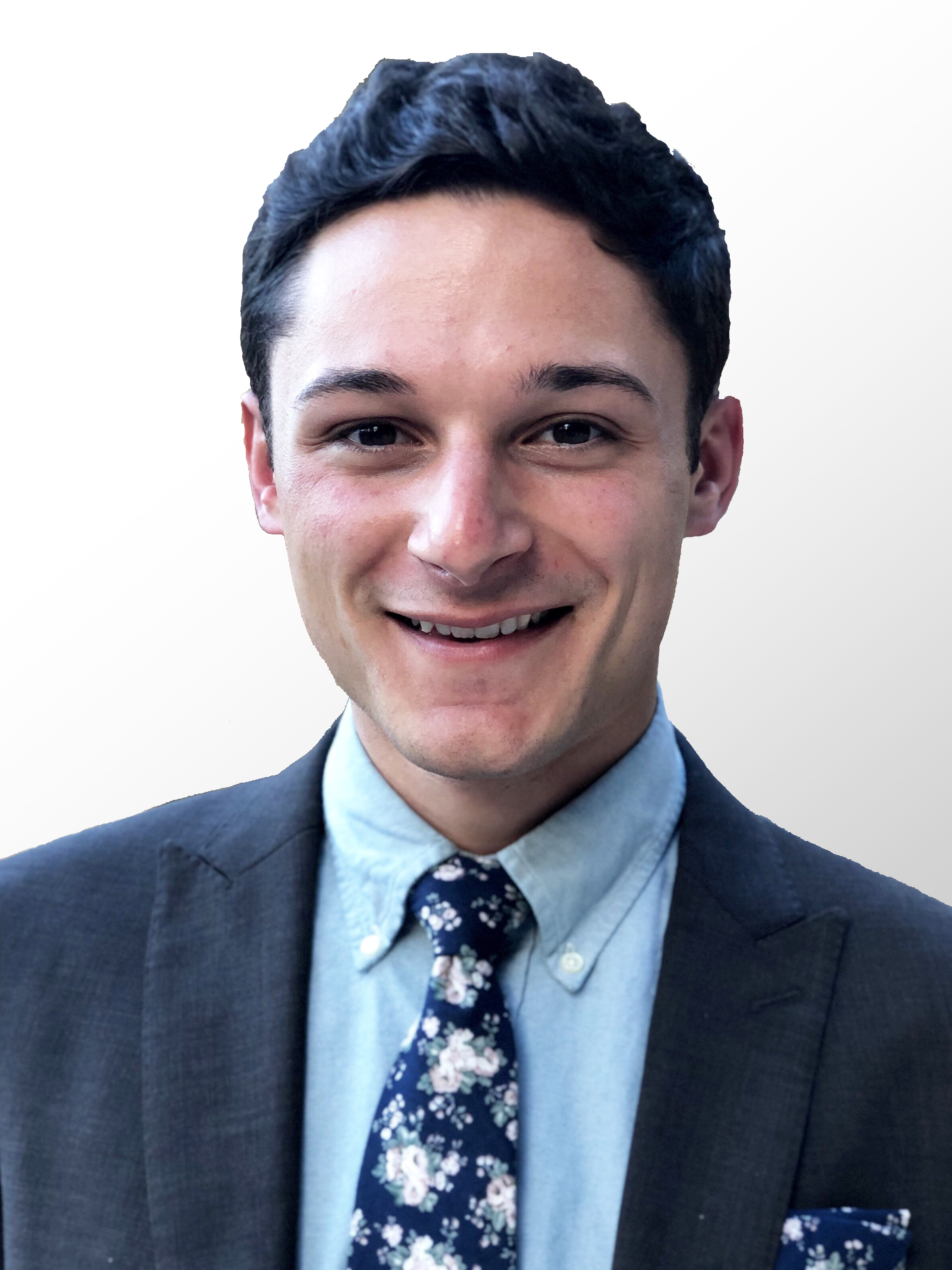
Michael Peruggia
Associate Researcher
Publications
2022
Silverman JL, Thurm A, Ethridge SB, Soller MM, Petkova SP, Abel T, Bauman MD, Brodkin ES, Harony-Nicolas H, Wöhr M, Halladay A. Genes Brain Behav. 2022 Mar 14;e12803. doi: 10.1111/gbb.12803
2021
Thirtamara Rajamani K, Leithead AB, Kim M, Barbier M, Peruggia M, Niblo K, Barteczko L, Lefevre A, Grinevich V, Harony-Nicolas H. Sci Rep. 2021 Nov 18;11(1):22541. doi: 10.1038/s41598-021-01818-x.
Leithead AB, Tasker JG, Harony-Nicolas H. J Neuroendocrinol. 2021 Nov 4:e13061. doi: 10.1111/jne.13061.
A randomized control trial of intranasal oxytocin in Phelan-McDermid Syndrome.
Fastman J, Foss-Feig J, Frank Y, Halpern D, Harony-Nicolas H, Layton C, Sandin S, Siper P, Tang L, Trelles P, Zweifach J, Buxbaum JD, Kolevzon A. Mol Autism. 2021 Sep 30;12(1):62. doi: 10.1186/s13229-021-00459-1.
Reduced brain volume and white matter alterations in Shank3-deficient rats.
Golden CEM, Wang VX, Harony-Nicolas H, Hof PR, Buxbaum JD. Autism Res. 2021 Sep; 14(9):1837-1842. doi: 10.1002/aur.2568.
2020
Altered synaptic ultrastructure in the prefrontal cortex of Shank3-deficient rats.
Jacot-Descombes S, Keshav NU, Dickstein DL, Wicinski B, Janssen WGM, Hiester LL, Sarfo EK, Warda T, Fam MM, Harony-Nicolas H, Buxbaum JD, Hof PR, Varghese M. Mol Autism. 2020 Nov 17;11(1):89. doi: 10.1186/s13229-020-00393-8.
Golden CEM, Yee Y, Wang VX, Harony-Nicolas H, Hof PR, Lerch JP, Buxbaum JD. Transl. Psychiatry 2020 Aug; 10(1):280. doi: 10.1038/s41398-020-00943-x.
Anpilov S, Shemesh Y, Eren N, Harony-Nicolas H, Benjamin A, Dine J, Oliveira VEM, Forkosh O, Karamihalev S, Hüttl R, Feldman N, Berger R, Dagan A, Chen G, Neumann ID, Wagner S, Yizhar O, Chen A. Neuron 2020 Aug; 10(1):280. doi: 10.1038/s41398-020-00943-x.
2019
Golden CEM, Breen MS, Koro L, Sonar S, Niblo K, Browne A, Burlant N, Di Marino D, De Rubeis S, Baxter MG, Buxbaum JD, Harony-Nicolas H. Cerebral Cortex, Volume 29, Issue 5, 2019 May, Pages 2228–2244. doi: 10.1093/cercor/bhz029.
2018
Oxytocin as a Modulator of Synaptic Plasticity: Implications for Neurodevelopmental Disorders.
Rajamani KT, Wagner S, Grinevich V, Harony-Nicolas H. Frontiers in Synaptic Neurosci. 2018 Jun; 19. doi: 10.3389/fnsyn.2018.00017.
Berg EL, Copping NA, Rivera JK, Pride MC, Careaga M, Bauman MD, Berman RF, Lein PJ, Harony-Nicolas H, Buxbaum JD, Ellegood J, Lerch JP, Wöhr M, Silverman JL. Autism Res. 2018 Apr; 11(4):587-601. doi: 10.1002/aur.1925.
Shank3-deficient rats exhibit degraded cortical responses to sound.
Engineer CT, Rahebi KC, Borland MS, Buell EP, Im KW, Wilson LG, Sharma P, Vanneste S, Harony-Nicolas H, Buxbaum JD, Kilgard MP. Autism Res. 2018 Jan;11(1):59-68. doi: 10.1002/aur.1883.
Oxytocin and Animal Models for Autism Spectrum Disorder.
Wagner S, Harony-Nicolas H. Behavioral Pharmacology of Neuropeptides: Oxytocin.Curr Top Behav Neurosci. 2018;35:213-237. doi: 10.1007/7854_2017_15.
2017
Autism spectrum disorder: neuropathology and animal models.
Varghese M, Keshav N, Jacot-Descombes S, Warda T, Wicinski B, Dickstein DL, Harony-Nicolas H, De Rubeis S, Drapeau E, Buxbaum JD, Hof PR. Acta Neuropathol. 2017 Oct;134(4):537-566. doi: 10.1007/s00401-017-1736-4.
Oxytocin improves behavioral and electrophysiological deficits in a novel Shank3-deficient rat.
Harony-Nicolas H, Kay M, Hoffmann JD, Klein ME, Bozdagi-Gunal O, Riad M, Daskalakis NP, Sonar S, Castillo PE, Hof PR, Shapiro ML, Baxter MG, Wagner S, Buxbaum JD. eLife 2017 Jan; 6. doi: 10.7554/eLife.18904.
2016
Cyfip1 Regulates Presynaptic Activity during Development.
Hsiao K, Harony-Nicolas H, Buxbaum JD, Bozdagi-Gunal O, Benson DL.The Journal of neuroscience : the official journal of the Society for Neuroscience 2016 Feb; 3. doi: 10.1523/JNEUROSCI.0511-15.2016.
2015
Harony-Nicolas H, De Rubeis S, Kolevzon A, Buxbaum JD. Journal of child neurology 2015 Dec; 30(14). doi: 10.1177/0883073815600872.
Ultrastructural analyses in the hippocampus CA1 field in Shank3-deficient mice.
Uppal N, Puri R, Yuk F, Janssen WG, Bozdagi-Gunal O, Harony-Nicolas H, Dickstein DL, Buxbaum JD, Hof PR. Molecular autism 2015; 6. doi: 10.1186/s13229-015-0036-x.
2014 & Earlier
Harony-Nicolas H, Mamrut S, Brodsky L, Shahar-Gold H, Barki-Harrington L, Wagner S. Psychoneuroendocrinology 2014 Jan; 39. doi: 10.1016/j.psyneuen.2013.10.004.
Poultney CS, Goldberg AP, Drapeau E, Kou Y, Harony-Nicolas H, Kajiwara Y, De Rubeis S, Durand S, Stevens C, Rehnström K, Palotie A, Daly MJ, Ma’ayan A, Fromer M, Buxbaum JD. American journal of human genetics 2013 Oct; 93(4). doi: 10.1016/j.ajhg.2013.09.001.
Mamrut S, Harony H, Sood R, Shahar-Gold H, Gainer H, Shi YJ, Barki-Harrington L, Wagner S. PloS one 2013; 8(2). doi: 10.1371/journal.pone.0056869.
Harony H, Wagner S. Neuro-Signals 2010; 18(2). doi: 10.1159/000321035.
What do unicellular organisms teach us about DNA methylation?
Harony H, Ankri S. Trends in parasitology 2008 May; 24(5). doi: 10.1016/j.pt.2008.02.002.
Sensing DNA methylation in the protozoan parasite Entamoeba histolytica.
Lavi T, Isakov E, Harony H, Fisher O, Siman-Tov R, Ankri S. Molecular microbiology 2006 Dec; 62(5).
Harony H, Bernes S, Siman-Tov R, Ankri S. Molecular and biochemical parasitology 2006 May; 147(1).
Join the Team
Our lab is always looking for highly motivated scientists with a considerable background in molecular and behavioral neuroscience.
If you are interested in joining the lab as a postdoctoral fellow or graduate student, please send a cover letter, curriculum vitae, and the names, phone numbers, and email addresses of three references who could provide letters of recommendation to Dr. Hala Harony-Nicolas at: hala.harony-nicolas@mssm.edu.
Volunteers with some background in neuroscience and biology and with passion and motivation for science are always welcome. If interested, please send your resume to Dr. Hala Harony-Nicolas at: hala.harony-nicolas@mssm.edu.

